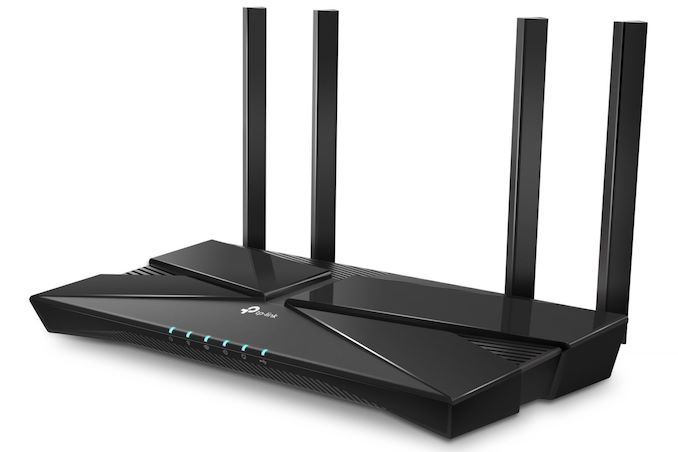AT 101: Wi-Fi 6 And Why You Want It
by Brett Howse on February 12, 2020 8:00 AM EST
Over the last generation of computing, there has been an explosion of devices that no longer have or need the capability of connecting to a hard-wired Ethernet connection, and that trend shows no intention of slowing down. When Personal Computers first started to utilize wireless Network Interface Cards (NICs) they would almost always be the sole device on the network. Fast forward to today, and practically every home has multiple devices, if not dozens, where the devices communicate using radio waves, either over a cellular connection, or over a home wireless network featuring Wi-Fi.
In the PC space, which is the focus of this article, cellular connectivity certainly exists, but almost exclusively in niche roles. While there are advantages to offering directly cellular connection on the PC, the extra recurring cost, especially in North America, means that most laptop owners will use Wi-Fi for network communication.
The term Wi-Fi is something that is omnipresent today, but if based on the Wi-Fi Alliance and adoption of IEEE 802.11 standards for local area networking over wireless. Although the Wi-Fi Alliance has recently renamed their standards, Wi-Fi has in the past been named directly based on the 802.11 standards as follows:
| Wi-Fi Names and Performance | ||||||
| Naming | Peak Performance | |||||
| Branding | IEEE Standard |
1x1 Configuration |
2x2 Configuration |
3x3 Configuration |
||
| Wi-Fi 4 Channel Width 20/40 MHz |
802.11n | 150 Mbps | 300 Mbps | 450 Mbps | ||
| Wi-Fi 5 Channel Width 20/40/80 MHz Optional 160 MHz |
802.11ac | 433 Mbps 867 Mbps |
867 Mbps 1.69 Gbps |
1.27 Gbps 2.54 Gbps |
||
| Wi-Fi 6 Channel Width 20/40/80/160 MHz |
802.11ax | 1201 Mbps | 2.4Gbps | 3.6 Gbps | ||
In an effort to simplify branding, the latest three standards of 802.11n, 802.11ac, and 802.11ax have been rebranded to Wi-Fi 4, Wi-Fi 5, and Wi-Fi 6, respectively. In the long term, the new branding should be much easier for most people to grasp, since larger means newer, although we’ve already got some confusion with Wi-Fi 6E – the 6GHz band addition for Wi-Fi 6 – so we shall see how that goes.
 One of the many Wi-Fi 6 routers announced at CES 2019 - TPLink AX1800
One of the many Wi-Fi 6 routers announced at CES 2019 - TPLink AX1800
Today, most homes should have at least Wi-Fi 4, or what used to be 802.11n. After all, this standard came along in 2009. Many will even have Wi-Fi 5, or 802.11ac, which offers some speed upgrades and a few optional extra features to help with scaling. Wi-Fi 6, or 802.11ax, is a very new standard, and until the end of 2019 there were not even that many devices which could connect over it. So, what is the point of this new standard, and do you really need to upgrade your home network?
This article intends to help answer those questions, as well as show how we at AnandTech are transitioning to Wi-Fi 6 for future reviews.











149 Comments
View All Comments
Axiomatic - Wednesday, February 12, 2020 - link
That all sounds great but I will wait for someone serious like Ubiquiti to release a device. Combo Router/WAN devices are silly. I don't need a new router. I only need new WAN devices with WI-FI6.yeeeeman - Wednesday, February 12, 2020 - link
This is only the beginning. Next wifi client solutions will get concurrent dual band and ultra high bands like 6Ghz.flyingpants265 - Wednesday, February 12, 2020 - link
I don't.PeachNCream - Wednesday, February 12, 2020 - link
I would want WiFi 6 if I could use it for anything. At the moment, the only broadband provider in my area is Century Link DSL at 10mbit. Internally device-to-device data transfer happens rarely. I had an old phone with a microSD card running as a file server for quick transfers, but I mainly use a 1TB 2.5 inch HDD in a USB 3.0 casing since its faster even on my one laptop that only has USB 2.0 ports. None of my computers supports anything newer than 802.11n either. No smart home devices here. I've worked as a tech professional for more than two decades so things are as analog and offline as possible at my place.regsEx - Wednesday, February 12, 2020 - link
What about ODFMA? Does it work? How well?Vitor - Thursday, February 13, 2020 - link
Lol @ people in this commenct section complaining about having only 200mb/s Internet. Poor you with a connection that can only deal with 10 4k streams of netflix.Dodozoid - Thursday, February 13, 2020 - link
I didn't get it. Does it make sense to get wifi 6 AP for wifi 5 clients in wifi 4 and 5 infested residential building?syleishere - Thursday, February 13, 2020 - link
You guys have to understand that wired connections are on their way out because with wireless, you can split more spectrums in the air for more thoroughput. Air fiber will be faster than your wired 1gb connection. 3 SSD's in a raid 0 would more than handle 3gbps. So it's your wireless card you want to upgrade. There are still purposes for wired, like linking to a database server with link agragation, but for majority of people, a good wireless card will get you speeds way above 1gbps so you can download those torrents faster lolPeachNCream - Thursday, February 13, 2020 - link
Are you aware there are faster than 1gbit connection speeds available over twisted pair copper?Dug - Thursday, February 13, 2020 - link
No offense, but you need to learn about networking before assuming what you do.